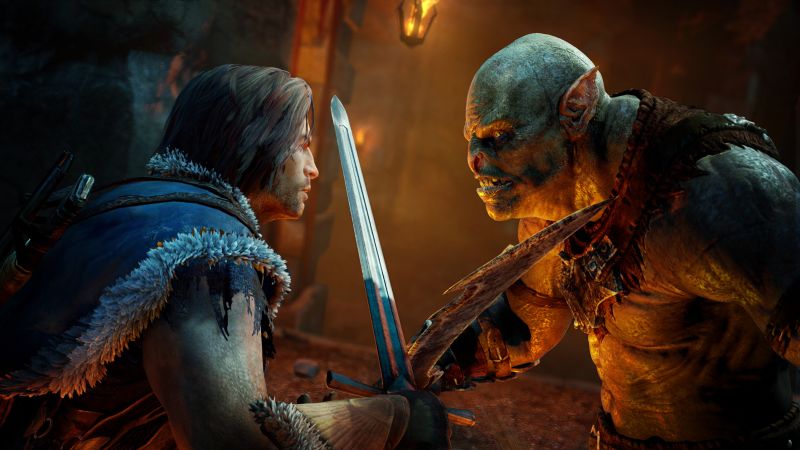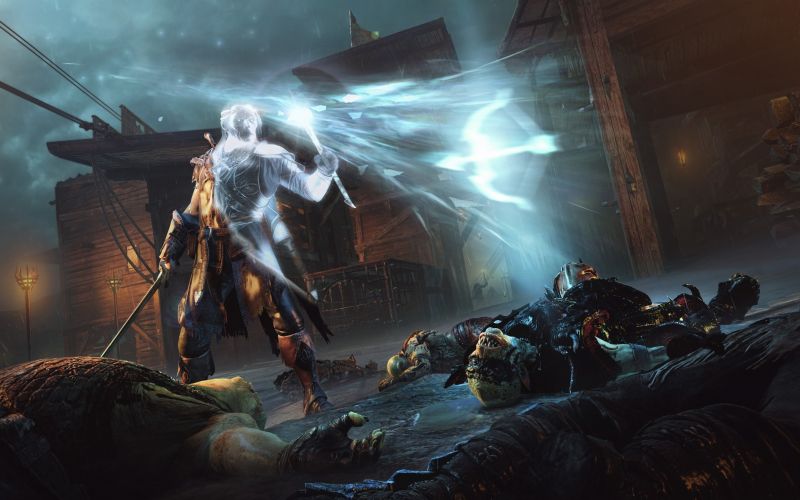
Middle-Earth: Shadow of Mordor has been a long-anticipated game that has had us gritting our teeth in desperation. The gameplay well might have received a little flak for being similar to IPs like the Arkham series and the Assassin’s Creed series. But knowing truly if that were the case, couldn’t have been said until the release, and truly, the game did have its own combat system evolved to suit its needs.
As good as the gameplay may be, the game was equally looked forward to for its graphical fidelity. Now the old generation of consoles may be holding back games like this, but Monolith has done an exceptional job of making the game run and look beautiful on all platforms and give the PC users a little extra. But does that little extra really count them out as a distinct advantage for the PC users?
"The Xbox One version of the game runs at 900p at 30fps while the PS4 version of the game runs at 1080p, but even with that much of a resolution difference, here again it takes a keen eye to cipher out the differences between the two versions of the game."
Developers nowadays are trying their level best to achieve console parity these gone days. But certain hardware limitations do not make that utterly possible. nevertheless, they have come very close to making games look equal on both, the Xbox ONe and The PS4.
With Middle-Earth: Shadow of Mordor, the differences in console graphics are again reduced to almost negligible. The Xbox One version of the game runs at 900p at 30fps while the PS4 version of the game runs at 1080p, but even with that much of a resolution difference, here again it takes a keen eye to cipher out the differences between the two versions of the game.
The Xbox One version of the game runs at 900p at 30fps while the PS4 version of the game runs at 1080p, but even with that much of a resolution difference, here again it takes a keen eye to cipher out the differences between the two versions of the game.
The anti-aliasing technique in place seems to be that of post-processing; the AA technique could be that of SMAA since object edges don’t seem very blurred, which is, usually, the case with the FXAA technique.
Surprisingly, the PC version seems to have a downgraded version of the AA techniques used although that problem is solved at high resolution, albeit at computational cost.
" The texture and shadow mapping on high settings is the same as that on the consoles, although the Xbox One seems to have shadows of a minutely inferior quality, possibly because of shadows being rendered at a lower resolution than other elements."
The PC version of the game benefits a little more when it comes to number of polygons in an area, which is almost always higher than the console version, if the PC version is set to high settings. This is most noticeable with certain environmental elements and especially the trees and bushes about you. All in all, the PC version appears a little more – bushy.
All in all, the PC version appears a little more – bushy. The texture and shadow mapping on high settings is the same as that on the consoles, although the Xbox One seems to have shadows of a minutely inferior quality, possibly because of shadows being rendered at a lower resolution than other elements.
The lighting system is consistently similar across all three platforms with some nice ambient occlusion and almost identical anisotropic filtering making the further off ground seem beautiful. Crepuscular rays play their part nicely too, adding to the appeal of the game in sunlit areas as it flits through holes in buildings and outside through the canopy.
Where the PC version does take the lead is when it comes to draw distances. The PC version of the game handles draw distances fairly well as all the elements seem pre-rendered while the console version may have you be putting up with a slight texture pop-in.
"Monolith Production have tried to give a similar experience to all platform owners by shearing off the differences in the graphical aspect of the game. While some may find this a cheer worthy fact, high-end PC owners are a bit disappointed with only a marginal difference over the consoles’ outputs."
The 3D and 2D skybox too are the same across the three platforms.Considering the gargantuan requirement of 6GB of GDDR RAM on the PC to run it with ultra textures. It doesn’t seem like a fair trade-off. But it does for the people who have that kind of hardware waiting to be pushed to its maximum potential. The ultra texture pack does add more detailing to the game, but it is not as much of a difference as one might expect from the hardware requirement for the same.
It doesn’t seem like a fair trade-off. But it does for the people who have that kind of hardware waiting to be pushed to its maximum potential. The ultra texture pack does add more detailing to the game, but it is not as much of a difference as one might expect from the hardware requirement for the same.
The game maintains a consistent 30 fps rate which is just as much as we could ask for. High-end PCs could, of course, push this to 60 fps.
Monolith Production have tried to give a similar experience to all platform owners by shearing off the differences in the graphical aspect of the game. While some may find this a cheer worthy fact, high-end PC owners are a bit disappointed with only a marginal difference over the consoles’ outputs.
The older generation of the consoles has been cut down significantly especially when it comes to the Nemesis System owing to the sheer enormity of the system that the older consoles could not have handled. On the graphical front, the game runs identically on both the system at 720p at 30fps. There are frame rate drops in polygon heavy areas or when you pan the camera too fast but otherwise the game holds its own and is not only playable, but enjoyable.
" Even with some minor differences that set apart the consoles, Middle-Earth: Shadow of Mordor's experience is almost identical across the new gen platforms as well on the PC. There are trade-offs involved when it comes to which is a better version, but they don't amount up to an awful lot. "
The anisotropic filtering and AO are wholly absent, while texture mapping has been given a little more im[ortance to make the game look better.
On the graphical front, the game runs identically on both the system at 720p at 30fps. There are frame rate drops in polygon heavy areas or when you pan the camera too fast but otherwise the game holds its own and is not only playable, but enjoyable. The anisotropic filtering and AO are wholly absent, while texture mapping has been given a little more im[ortance to make the game look better.
Shadows too are not really up to the mark but then there’s only so much you could squeeze out of the duo of almost a decade old consoles.Naturally, with the hardware in consideration, the game has minimal depth of field and tons of texture pop-in. But that is all right because Monolith’s focus has been on making the gameplay experience as consistent as possible and that, is largely the case.
Even with some minor differences that set apart the consoles, Middle-Earth: Shadow of Mordor’s experience is almost identical across the new gen platforms as well on the PC. There are trade-offs involved when it comes to which is a better version, but they don’t amount up to an awful lot.
The PC is superior to the consoles, but that is provided you have good enough hardware for that. The only thing that the Xbox One falls short of in this game is the poorer shadow quality, but in all taken together, this amounts to nigh on nothing.


















